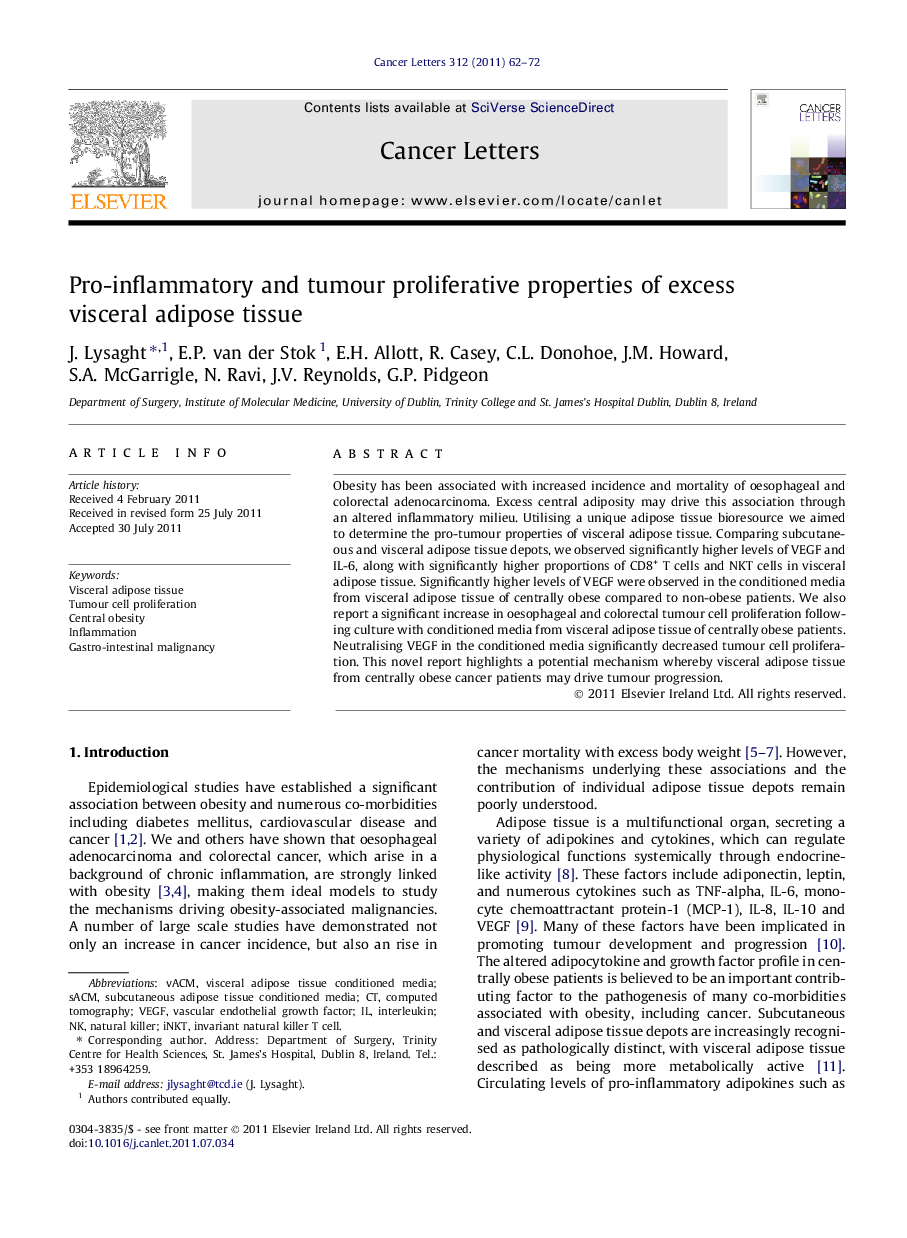| Article ID | Journal | Published Year | Pages | File Type |
|---|---|---|---|---|
| 2113585 | Cancer Letters | 2011 | 11 Pages |
Obesity has been associated with increased incidence and mortality of oesophageal and colorectal adenocarcinoma. Excess central adiposity may drive this association through an altered inflammatory milieu. Utilising a unique adipose tissue bioresource we aimed to determine the pro-tumour properties of visceral adipose tissue. Comparing subcutaneous and visceral adipose tissue depots, we observed significantly higher levels of VEGF and IL-6, along with significantly higher proportions of CD8+ T cells and NKT cells in visceral adipose tissue. Significantly higher levels of VEGF were observed in the conditioned media from visceral adipose tissue of centrally obese compared to non-obese patients. We also report a significant increase in oesophageal and colorectal tumour cell proliferation following culture with conditioned media from visceral adipose tissue of centrally obese patients. Neutralising VEGF in the conditioned media significantly decreased tumour cell proliferation. This novel report highlights a potential mechanism whereby visceral adipose tissue from centrally obese cancer patients may drive tumour progression.
► Visceral fat has significantly higher VEGF, CD8+ and NKT cells than subcutaneous fat. ► VEGF levels in serum and vACM is significantly higher in viscerally obese patients. ► vACM from viscerally obese patients induces significant tumour cell proliferation. ► Neutralising VEGF but not IL-6 in vACM significantly reduces tumour cell proliferation. ► VEGF may represent a potential therapeutic target in obese cancer patients.
